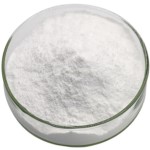CAS Number 334824-43-0 or 92785-94-9, Magnesium Taurate or Magnesium Ditaurate GMP Grade Manufacturers Exporters







CAS Number 334824-43-0 or 92785-94-9, Magnesium Taurate or Magnesium Ditaurate Manufacturer Exporter
For Properties Specifications of Magnesium Taurate or Magnesium Ditaurate Click Properties, Specifications of Magnesium Taurate or Magnesium Ditaurate Manufacturer.
For Uses of Magnesium Taurate or Magnesium Ditaurate Click Uses of Magnesium Taurate or Magnesium Ditaurate Manufacturer.
For For SDS MSDS Sheet of Magnesium Taurate or Magnesium Ditaurate Click SDS Safety Data Sheet MSDS Sheet of Magnesium Taurate or Magnesium Ditaurate Manufacturer.
The Properties and Specifications of Magnesium Taurate or Magnesium Ditaurate:
General Properties and Specifications of Magnesium taurate or Magnesium ditaurate or Magnesium;2-aminoethanesulfonate:
Appearance: White powder.
Assay as Magnesium: 8-10% (It will be typically around 9%)
Lead: 3 ppm maximum.
Arsenic: 1ppm maximum.
Heavy metal (as Pb): 10ppm maximum.
Mercury: 0.1ppm maximum.
Cadmium: 1ppm maximum.
Loss on drying: 2% maximum.
Bulk Density: 0.4gm/cc
Solubility: Slightly soluble in water and in ethanol.
Storage: Store at room temperature, in sealed container, avoid strong heat and light.
Application: Supplements, Pharmaceuticals, Healthcare, Cosmetics etc.
Storage: Store in a cool dry place, to prevent moisture, heat.
The Uses of Magnesium Taurate or Magnesium Ditaurate:
Magnesium taurate has prominent antihypertensive and cardioprotective activity via its potent antioxidant activity and can be used as a nutrition supplement to improve the cardiovascular health. Magnesium taurate contains the amino acid taurine. Research suggests that adequate intakes of taurine and magnesium play a role in regulating blood sugar. Magnesium Taurate promotes a relaxed state of mind and supports healthy stress levels. Daily supplementation with Magnesium Taurate may offer targeted support for cardiovascular and nerve health for a better night's rest.
The MSDS-SDS Hazard Statement of Magnesium Taurate or Magnesium Ditaurate:
Magnesium Taurate SDS, Safety Data Sheet
MSDS Sheet, Material Safety Data Sheet 14-Jan-23
Section 1: Chemical Product and Company Identification
Product Name & Other Names: Magnesium Taurate.
Synonym: Magnesium ditaurate or Magnesium;2-aminoethanesulfonate
CAS Number: 334824-43-0 or 92785-94-9
EINECS EC Code: 871-017-6
Molecular Formula: C4H12MgN2O6S2
Molecular Weight: 272.57
Relevant uses and uses advised against (if any): Industrial Manufacturing.
Section 2: Hazards Identification
GHS, Globally Harmonized System Classification in accordance with 29 CFR 1910
Hazard Class and Category Code(s), Regulation (EC) No 1272/2008 (CLP)
Not a hazardous substance or mixture according to Regulation (EC) No. 1272/2008.
This substance is not classified as dangerous according to Directive 67/548/EEC.
Labeling Regulation EC 1272/2008 (CLP) & GHS
GHS Label Elements NONE |
Signal Word: None
Precautionary statements:
P261: Avoid breathing dust/fume/gas/mist/vapors/spray.
P262: Do not get in eyes, on skin, or on clothing.
P281: Use personal protective equipment as required.
P302+P352: IF ON SKIN: Wash with plenty of soap and water.
P304+P340: IF INHALED: Remove victim to fresh air and keep at rest in a position comfortable for breathing.
P305+P351+P338: IF IN EYES: Rinse cautiously with water for several minutes. Remove contact lenses, if present and easy to do. Continue rinsing.
P337+313: If eye irritation persists get medical advice/attention.
Section 3: Composition and Information on Ingredients
Product Name & Other Names: Magnesium Taurate.
Synonym: Magnesium ditaurate or Magnesium;2-aminoethanesulfonate
CAS Number: 334824-43-0 or 92785-94-9
Section 4: First Aid Measures
Always seek medical advice after the first aid treatment.
Skin: Rinse with water. Soap may be used. Seek Medical Aid.
Eyes: Wash eyes with plenty of water for at least 15 minutes, lifting lids occasionally. Seek Medical Aid.
Inhalation: Remove to fresh air. If not breathing, give artificial respiration. If breathing is difficult, give oxygen.
Ingestion: If swallowed, induce vomiting immediately after giving two glasses of water. Never give anything by mouth to an unconscious person.
Section 5: Fire and Explosion Data
Flammability of the Product: Flammable in high concentration of dust in air.
Products of Combustion: Carbon oxides, Nitrogen oxides (NOx), Sulphur oxides.
Fire Fighting Media and Instructions: Use water spray, alcohol-resistant foam, dry chemical, or carbon dioxide. Wear self-contained breathing apparatus for firefighting if necessary.
Extinguishing Media Not recommended: Avoid using solid water jet as it may scatter the fire.
Special Information: In the event of a fire, wear full protective clothing and NIOSH-approved self-contained breathing apparatus with full face piece operated in the pressure demand or other positive pressure mode. At high temperatures under fire conditions, it may produce toxic or irritating fumes. Fire-extinguishing work is done from the windward and the suitable fire-extinguishing method according to the surrounding situation is used.
Section 6: Accidental Release Measures
Personal precautions, protective equipment, and emergency procedures: Avoid breathing dust/fumes/gas/mist/vapors/spray. Use individual protective equipment (waterproof boots, suitable protective clothing, safety glasses, etc.). Restrict unprotected personnel from the area. Prevent any contact with hot surfaces. Do not approach facing the wind. Do not touch the spilled material.
Environmental precautions: Do not let the product enter drains, soil, or water sources.
Methods and materials used for containment cleanup procedures and Storage: Contain spilled material. Do not inhale vapors, mist, or gas. Avoid dust formation. Use a shovel to put the material into a convenient waste disposal container. Finish cleaning by spreading water on the contaminated surface and dispose as per law.
Section 7: Handling and Storage
Precautions for safe handling: Apply according to good manufacturing and industrial hygiene practices. Ensure proper ventilation. Wash thoroughly after handling. Do not drink, eat, or smoke while handling. Avoid contact with skin, eyes, and clothing. Minimize dust generation. Avoid breathing dust/fumes/gas/mist/vapors/spray. Avoid contact with eyes, skin, and clothing. Keep container tightly closed. Avoid ingestion and inhalation. Use individual protective equipment (waterproof boots, suitable protective clothing, safety glasses, etc.).
Conditions for safe storage, including any incompatibilities: Store in cool, dry, and ventilated area away from heat sources and protected from sunlight in tightly closed original container. Keep air contact to a minimum. Do not leave the material container open. Store protected from heat, sparks and ignition sources and incompatible materials. Avoid contact with skin and eyes. Avoid inhalation of dust/mist/vapor. Do not store with incompatible materials like oxidizing agents, acids.
Section 8: Exposure Controls/Personal Protection
Engineering Controls: Use process enclosures, local exhaust ventilation, or other engineering controls to keep airborne levels below recommended exposure limits.
Exposure Limits: This product does not contain any hazardous materials with occupational exposure limits established by the region-specific regulatory bodies.
Ventilation System: A system of local and/or general exhaust is recommended to keep employee exposures as low as possible.
Personal Respirators (NIOSH Approved): For conditions of use where exposure to dust or mist is apparent and engineering controls are not feasible, a particulate respirator may be worn.
Skin Protection: Wear protective gloves and clean body-covering clothing.
Eye Protection: Use chemical safety goggles and/or full-face shield where dusting or splashing of solutions is possible. Maintain eye wash fountain and quick-drench facilities in work area.
Other Control Measures: Maintain good housekeeping in work area. Handle in accordance with good industrial hygiene and safety practice.
Section 9: Physical and Chemical Properties
Physical state and appearance: White powder.
Odor: Not available.
Odor threshold: Not available.
pH (5% solution/water): Not available.
Relative density: Not available.
Melting point/freezing point: Not available.
Initial boiling point and boiling range: Not available.
Flash point: Not available.
Auto-ignition temperature: Not available.
Decomposition temperature: Not available.
Upper/lower flammability or explosive limits: Not available.
Vapor pressure: Not available.
Vapor density: Not available.
Evaporation rate: Not available.
Flammability (solid, gas): Not available.
Partition coefficient: n-octanol/water: Not available.
Solubility: Slightly soluble in water and in ethanol.
Viscosity: Not available.
Section 10: Stability and Reactivity Data
Stability: It is stable in room temperature in closed containers under normal storage & handling.
Conditions of instability: Incompatible materials, Moisture
Incompatibility with various substances: Avoid high temperatures, sparks, open flames, and moisture. Avoid contact with strong oxidizing agents.
Polymerization: Will not occur.
Section 11: Toxicological Information
LD50 Oral - Rat Not available.
Carcinogenic Effects: Not a reported carcinogen by IARC, NTP, ACGIH, OSHA.
Mutagenic Effects: Not available.
Developmental Toxicity: Not available.
Reproductive Effects: No information available.
Section 12: Ecological Information
Toxicity to fish: Not available.
Persistence and Degradability: It is expected to be degradable.
Mobility: Likely to be mobile.
Results of PBT and vPvB assessment: No data available for assessment.
Section 13: Disposal Considerations
Waste Disposal: Waste must be disposed of in accordance with federal, state, and local environmental control regulations.
Section 14: Transport Information
DOT USA, TDG Canada & ADR/RID Europe: Not controlled.
IMDG/IMO: Not controlled.
IATA: Not controlled.
Section 15: Other Regulatory Information
USA Regulations:
California Prop 65: None of the chemicals in this product are listed.
Disclaimer:
**************************
Our company provides this MSDS sheet in good faith but makes no representation as to its comprehensiveness or accuracy. This SDS sheet is intended only as a guide to the appropriate precautionary handling of the material by a properly trained person using this product. The above information has been compiled from various sources and has the possibility of discrepancy and being out-dated information. Individuals receiving the information must exercise their independent judgment and do further search in determining its appropriateness for a particular purpose. In no case shall our company be liable to loss or damages by the product user.
**************************
Anmol Chemicals & Pharmaceuticals Pvt. Ltd. is an off-shoot of Anmol Chemicals Taloja. It is located in MIDC Taloja and it is manufacturing pharmaceutical grades of API, Excepients, Food grade and Reagent grade chemicals. Anmol Chemicals & Pharmaceuticals Pvt. Ltd. is a several decades old group of companies, engaged in manufacturing, supplying, distributing, wholesale supplies for actual users, retail or small pack supplies for research and development chemicals, fine and speciality chemicals, pharmaceutical excipients, mineral fortifiers in chemically pure, Analytical reagent grade, IP BP USP Ph Eur EP JP and other pharmaceutical grade monograph including FCC Food grade chemicals and Nutraceuticals, Mineral Fortifiers at best prices.

Magnesium Taurate or Magnesium Ditaurate Structure
CAS Number 334824-43-0 or 92785-94-9, Magnesium Taurate or Magnesium Ditaurate Manufacturer Exporter
ANMOL CHEMICALS & PHARMACEUTICALS Pvt. Ltd.
India, USA, Europe, UAE
TELEPHONE: +912223770100
Navi Mumbai, INDIA
e-mail: info(At the rate i.e. @)anmol.org
Copyright. 4-nov-24
We manufacture:
Glacial Acetic Acid Manufacturer
Maleic Acid
Malic Acid
Maltodextrin
Hydrated Manganese Glycerophosphate
Methylene Blue
Myristic Acid

